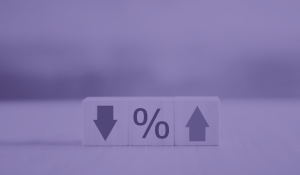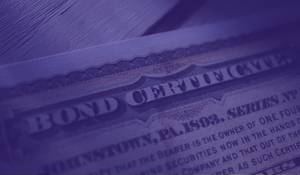Payroll reductions by a growing list of tech companies have done little to impact the overall...
Fed 101: back to basics
It’s time to brush up on some Fed fundamentals to understand more about what its actions mean for investors and the economy.
Investors over the past few months have been highly sensitive to the words and actions of the Fed. In turn, The Waterwheel has spilled plenty of ink about the Fed’s effort to vanquish high inflation without sending the economy into a tailspin. To understand more about what’s going on with the Fed today, it would help to get back to basics with a brief and broad overview of Fed policy.
As our nation’s central bank, the Fed uses its power over interest rates to speed up or slow down economic activity to promote a healthy economy. The Fed has been charged by Congress to target two specific goals as standards of economic health: full employment and price stability. In an ideal state, both of these objectives are achieved. If one is not being met, the Fed is likely to adjust interest rates to guide the economy back in the right direction.
There are three general “stances” the Fed can take in influencing the economy: accommodative, neutral, or restrictive. It decides which of these stances is appropriate and to what degree based on the problem at hand. If unemployment is rising, the Fed might take an accommodative stance by lowering interest rates to help speed up economic activity to promote hiring. If prices are surging, like this past year, the Fed is likely to take a restrictive stance by raising rates to slow the economy down which helps ease inflation.
When the economy is humming along nicely, with both employment and prices near desired levels, the Fed aims to keep interest rates at a neutral level. This ideal scenario—or something close to it—is always the long-term goal of the Fed. But, from time to time, short-term conditions change and the Fed works to get the economy back on track with some accommodation or restriction, which happens to be the case today.
As mentioned above, the Fed currently sees high inflation as a problem and has taken a restrictive stance by raising interest rates to slow the economy and relieve pressure on prices. It’s actually hiked rates at the fastest pace since the early 1980s. And yet, Fed Chairman Jerome Powell said recently that he still thinks rates are not yet at a level “sufficiently restrictive” to send inflation back to levels in line with the Fed’s target. While rates are much higher than a year ago, consumers continue to spend and businesses continue to hire, and the economy has not slowed as much as the Fed would like to see.
So, even with all of the recent rate increases, the Fed expects to continue moving further away from a neutral stance by leaning deeper into its restrictive policy until it sees more substantial evidence that the inflation problem is under control enough to move back in toward neutrality. In other words, the patient needs a higher dose of medicine before the doctor is convinced the illness is under control.
What does this mean for the economy? Much like the sick patient receiving medicine from a doctor, there are potential side-effects when the Fed applies treatment for the economy. The primary tradeoff when the Fed raises rates is the worry that a slower economy risks a troublesome pullback in consumer spending, job losses, and a potential recession. But there’s also a risk that the Fed doesn’t raise rates far enough and fails to address the persistent inflation that has plagued the economy lately.
With risks on both sides, one can easily see how difficult this balancing act is for the Fed. For his part, Mr. Powell has expressed a preference for accepting the pain of a slower economy that comes with the gain of lower inflation rather than not doing enough to slow the economy and reduce high inflation. When he expresses that the current stance is not yet “sufficiently restrictive”, we should expect the Fed to move rates higher and potentially leave them at higher levels for longer.
So, what does that mean for stock market investors? It’s important to note that the stock market and the economy are not the same thing. The economy encompasses all activities related to making, selling, and buying goods and services we use to sustain our standard of living. The stock market is the buying and selling of shares of ownership in a subset of companies that are part of the economy.
While the two are different, they are related. The companies whose shares are traded on the stock market—publicly traded corporations—are a key component of the economy. The demand for stocks fluctuates based on how valuable the prospect of holding ownership in these companies in the future seems to investors now. This prospect can be influenced by all sorts of factors—news about the economy, company earnings, politics, pandemics, and actions taken by the Fed.
Given the relationship between the stock market and the economy, stock prices tend to rally when the economic outlook is bright and recoil when it darkens. So, investors would like to see the Fed beat high inflation and send the economy back to a more balanced state of growth. But the path to brighter days increasingly looks to include more short-term pain, with potentially higher interest rates than expected for a longer period of time. Investors are grappling with how to process this as the situation unfolds, which leads to the daily fluctuations we have seen in the stock market.
Let’s remind ourselves of the long-term goal of the Fed—a neutral stance with the economy growing at a healthy level. Even with short-term fluctuations in economic health, the longer trend has been healthy growth, and that trend is expected to continue into the future. The stock market is likely to continue to experience short-term ups and downs as the Fed’s fight against inflation continues, but the long-term prospects for investors to benefit from a healthy growing economy in the future remain strong.
-1.png?width=50&name=Untitled%20design%20(32)-1.png)


